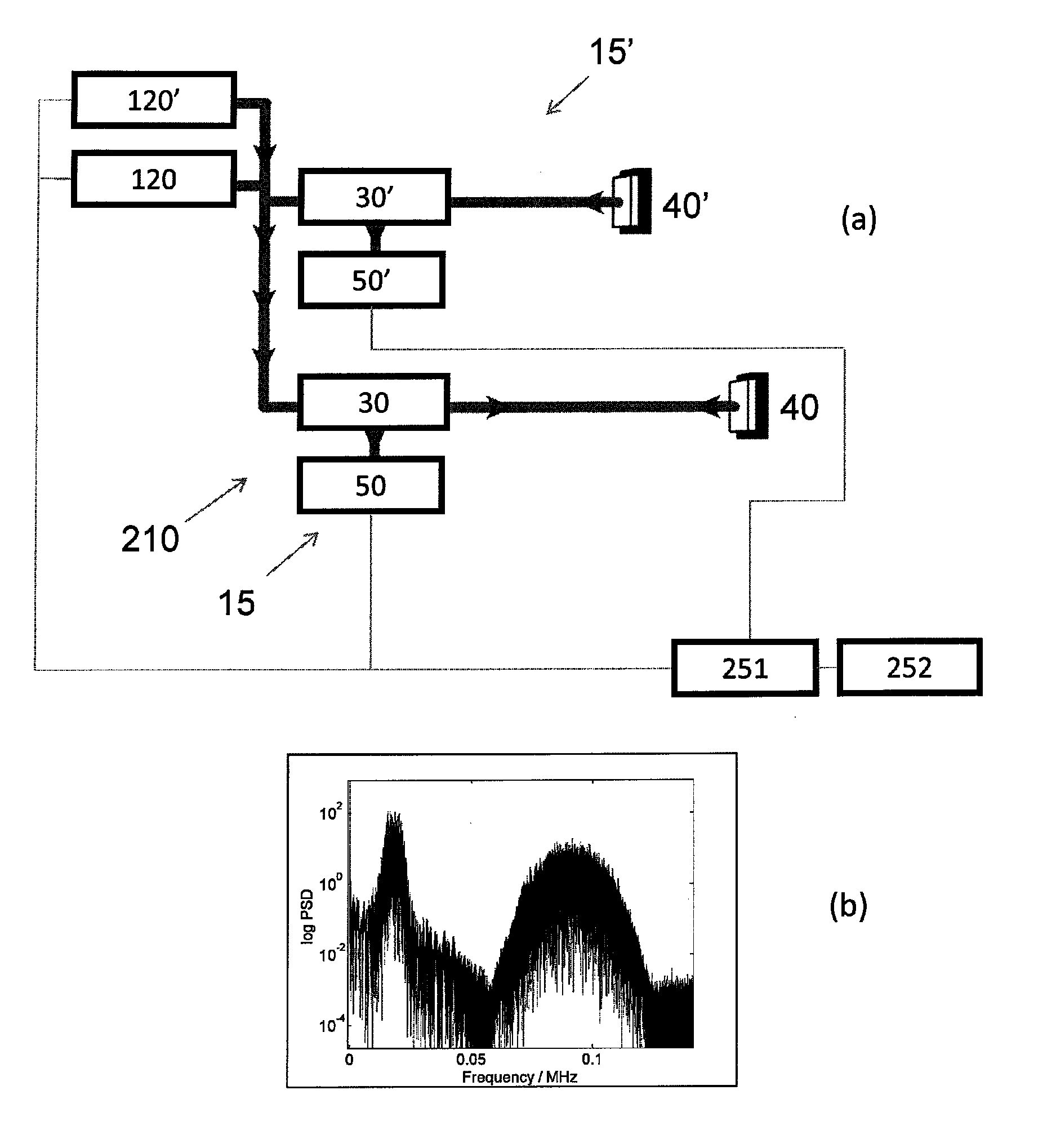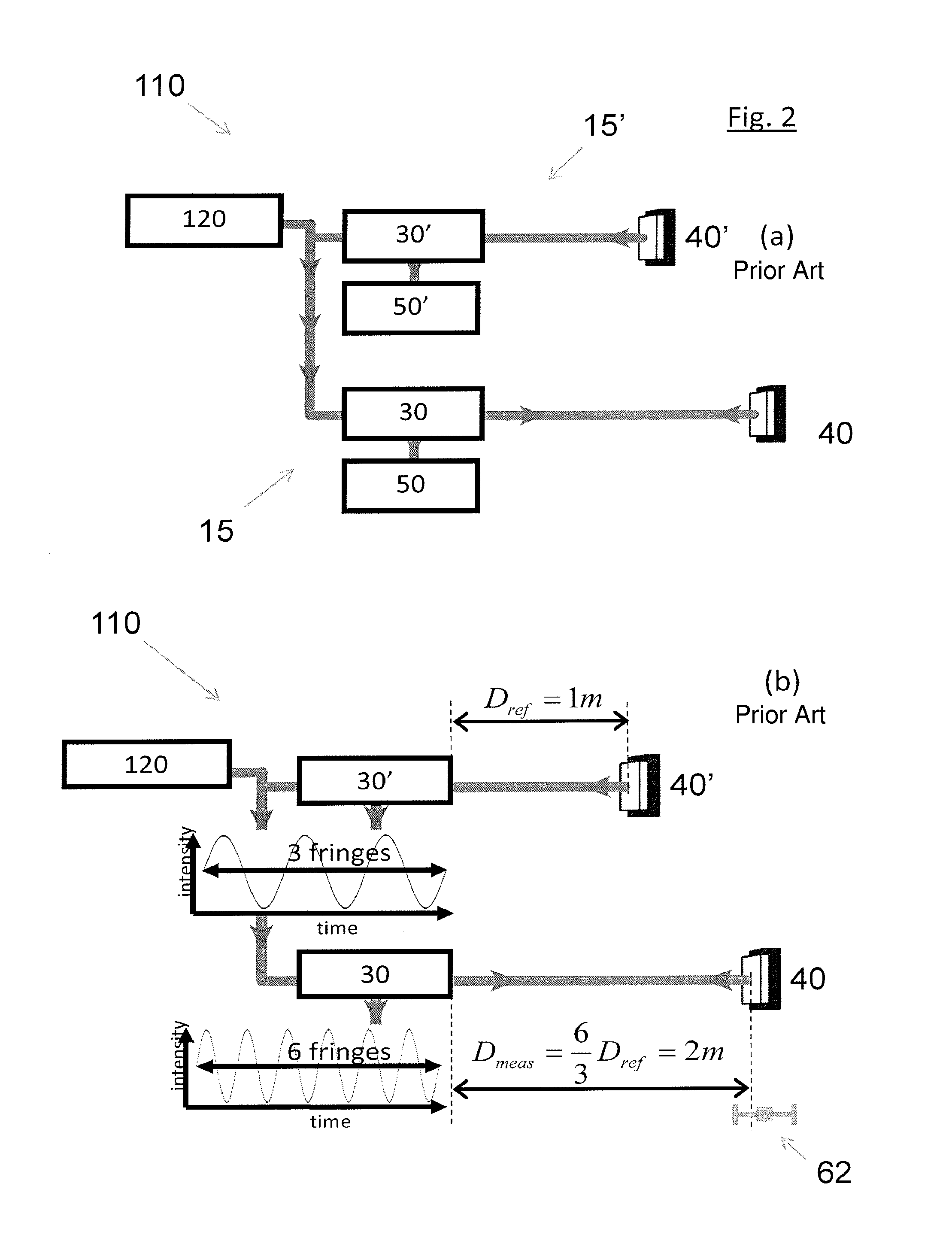Apparatus and method for measuring distance
a technology applied in the field of applicator and distance measurement, can solve the problems of limiting the accuracy of our knowledge, fsi is less accurate and precise than the simple method of interferometry, and interferes destructively
- Summary
- Abstract
- Description
- Claims
- Application Information
AI Technical Summary
Benefits of technology
Problems solved by technology
Method used
Image
Examples
Embodiment Construction
[0082]An example standard, prior-art interferometer system 10 (FIG. 1) comprises a laser 20, providing light of an intensity I0 and fixed wavelength λ. Light from the laser passes into an interferometer 15. The interferometer 15 includes an interferometer head 30. In accordance with the description given above, within the interferometer head 30 the light is split by a splitter 33, with a portion travelling a round-trip back to the splitter 33 over a known distance to a reference mirror 35. The remainder of the light travels out of the head 30, over an unknown distance to a measurement mirror 40. The light portion is reflected at mirror 40 and travels back to the splitter 33 within the head 30. The difference between the unknown distance to mirror 35 and the known distance to mirror 40 is known as the optical path difference, D. This is the distance that is to be measured. The light portion that has traveled the known distance and the light portion that has traveled to and from the m...
PUM
 Login to View More
Login to View More Abstract
Description
Claims
Application Information
 Login to View More
Login to View More - R&D
- Intellectual Property
- Life Sciences
- Materials
- Tech Scout
- Unparalleled Data Quality
- Higher Quality Content
- 60% Fewer Hallucinations
Browse by: Latest US Patents, China's latest patents, Technical Efficacy Thesaurus, Application Domain, Technology Topic, Popular Technical Reports.
© 2025 PatSnap. All rights reserved.Legal|Privacy policy|Modern Slavery Act Transparency Statement|Sitemap|About US| Contact US: help@patsnap.com



